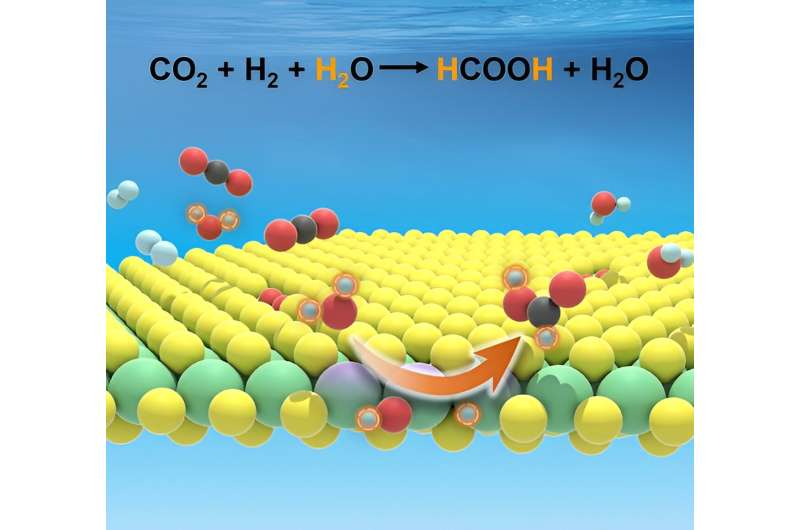This article has been reviewed according to Science X's editorial process and policies. Editors have highlighted the following attributes while ensuring the content's credibility:
fact-checked
peer-reviewed publication
trusted source
proofread
Researchers develop novel catalyst for carbon dioxide hydrogenation to formate

Hydrogenation of carbon dioxide (CO2) to formate is an attractive approach for the utilization of this greenhouse gas. However, non-precious metal-based catalysts for CO2 hydrogenation to formate suffer from either low activity or low stability. It is still challenging to develop low-cost and high-performance catalysts.
Recently, a research group led by Prof. Deng Dehui from the Dalian Institute of Chemical Physics (DICP) of the Chinese Academy of Sciences (CAS) has developed an edge-rich molybdenum disulfide (ER-MoS2) catalyst for CO2 hydrogenation to formate with superior activity and high stability.
The study was published in Angewandte Chemie International Edition on July 20.
In the study, the ER-MoS2 with abundant edges delivered a high turnover frequency of 780.7 h-1 with formate selectivity of over 99% at 200°C, and exhibited good stability.
The researchers revealed that sulfur vacancies at MoS2 edges were the active sites, and the selective production of formate was enabled via a new water-mediated hydrogenation mechanism, in which surface OH* and H* species from H2O dissociation on the edge-sulfur vacancies served as moderate hydrogenating agents with residual O* reduced by H2.
"This work opens new avenues for developing low-cost non-noble metal catalysts for the hydrogenation of CO2 to formate," said Prof. Deng. "The water-mediated reaction mechanism also provides insights for designing MoS2-based catalysts for selective hydrogenation reactions."
More information: Zifeng Wang et al, Boosting CO2 Hydrogenation to Formate over Edge‐Sulfur Vacancies of Molybdenum Disulfide, Angewandte Chemie International Edition (2023). DOI: 10.1002/anie.202307086
Journal information: Angewandte Chemie International Edition
Provided by Chinese Academy of Sciences




















